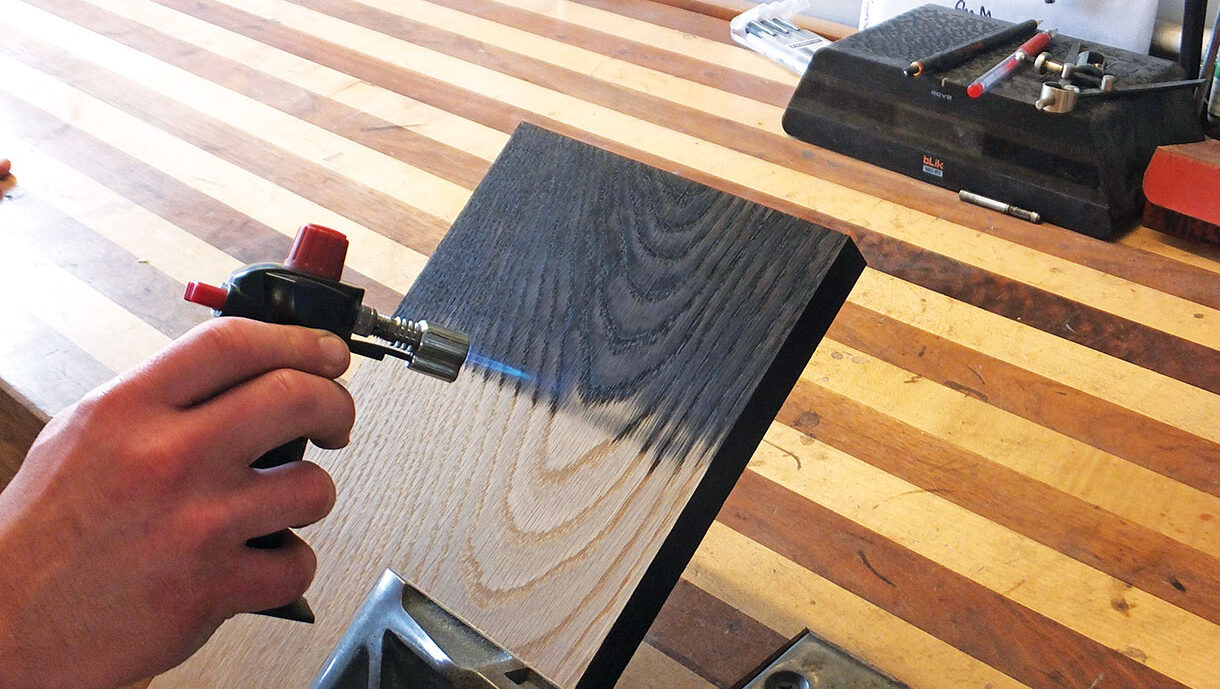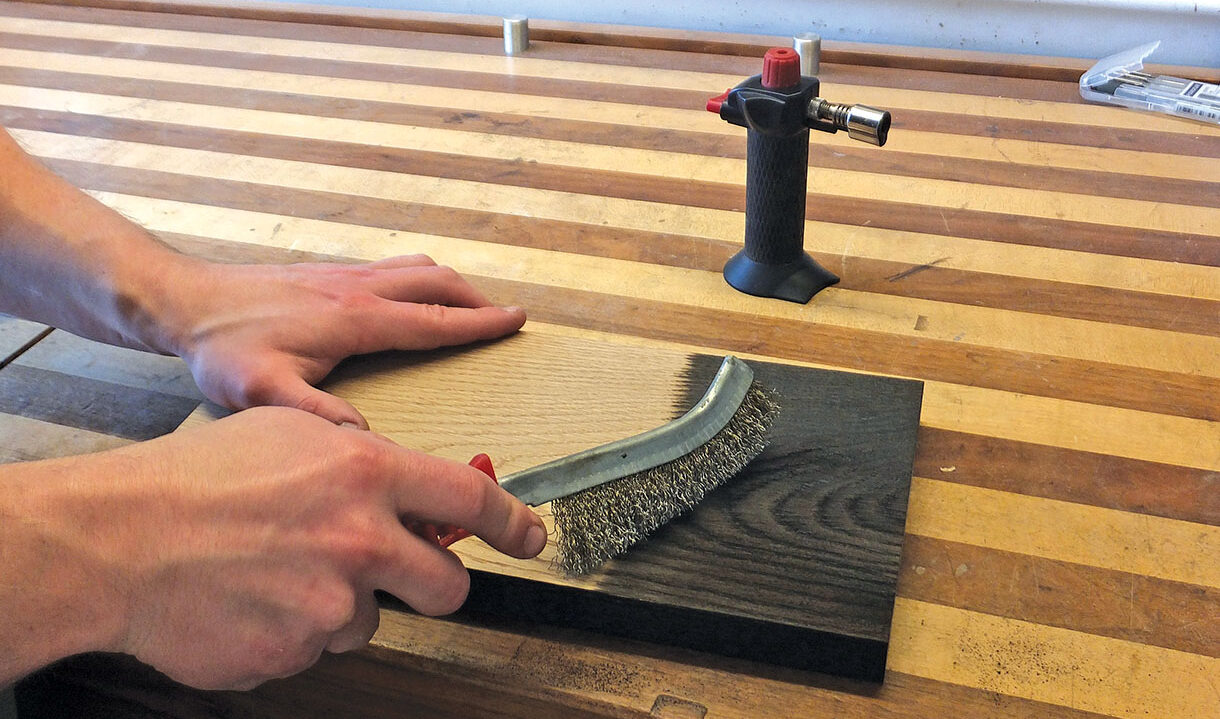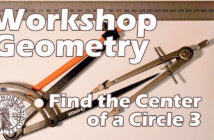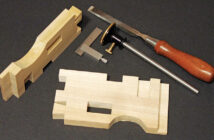Focus on…Scorching:
Danny Maddock shares his technique for scorching your timbers.

Danny Maddock shares his technique for scorching your timbers
One of the elements of woodwork that appeals to us all, makers and clients alike, is the use of beautiful timbers in our creations. Timber choice can make or break a piece of furniture. It is then only inevitable that over time these timbers will become sought after, expensive, and ultimately endangered. Ebony (Diospyros spp.) is one timber that has fascinated us and has been utilised in fine furniture for hundreds of years – there is no other timber like it, an extremely strong and durable hardwood, with a deep, natural black colour. It is the colour of ebony that has made it so popular over the years and its association with luxury goods has driven up the demand and, therefore, the price. Some close grained hardwoods are a great alternative to ebony in terms of their structural properties but nothing really says ebony quite like the real thing. There are, however, many ways of ‘ebonising’ other species to create the desired effect for a fraction of the cost.
Scorching is perhaps the most fun method of ebonising. Who doesn’t enjoy taking a blowtorch to a piece of wood? But there is some skill involved as to whether you achieve a finish that is black or just chargrilled. At ‘Robinson House Studio’, we use a small blowtorch intended for chefs making crème brulee. The trick is to not let the timber get too hot and to take your time. Work your way slowly around, ensuring that the timber doesn’t catch a flame. This way of ebonising works very well if you are after a textured grain effect. After scorching, you can use a wire brush to remove any excess, but the secret in getting the colour is to apply the aforementioned acetic acid approach after scorching. I have found that after brushing, the timber becomes a more consistent colour but is dark brown rather than black. Acetic acid will darken the whole piece as well as colour any deep grain that the blowtorch can’t reach.

A brass wire brush is great for getting rid of excess and creating a texture



